Kazakh Steppe
The ecoregion’s land area is provided in units of 1,000 hectares. The conservation target is the Global Safety Net (GSN1) area for the given ecoregion. The protection level indicates the percentage of the GSN goal that is currently protected on a scale of 0-10. N/A means data is not available at this time.
Bioregion: Kazakh Forest Steppe & Grasslands (PA34)
Realm: Central Eurasia
Ecoregion Size (1000 ha):
80,631
Ecoregion ID:
732
Conservation Target:
30%
Protection Level:
1
States: Kazakhstan, Russia
Feathergrass and fescue steppe grasslands resemble an undulating sea as they sway in the constant wind. Ephemeral flowers flood the dry steppes with surprising surges of color. Critically endangered sociable lapwings nest on bare salty ground, and millions of birds stop to feed, rest, and molt their feathers at shallow lakes within the Kazakh Forest Steppe ecoregion.
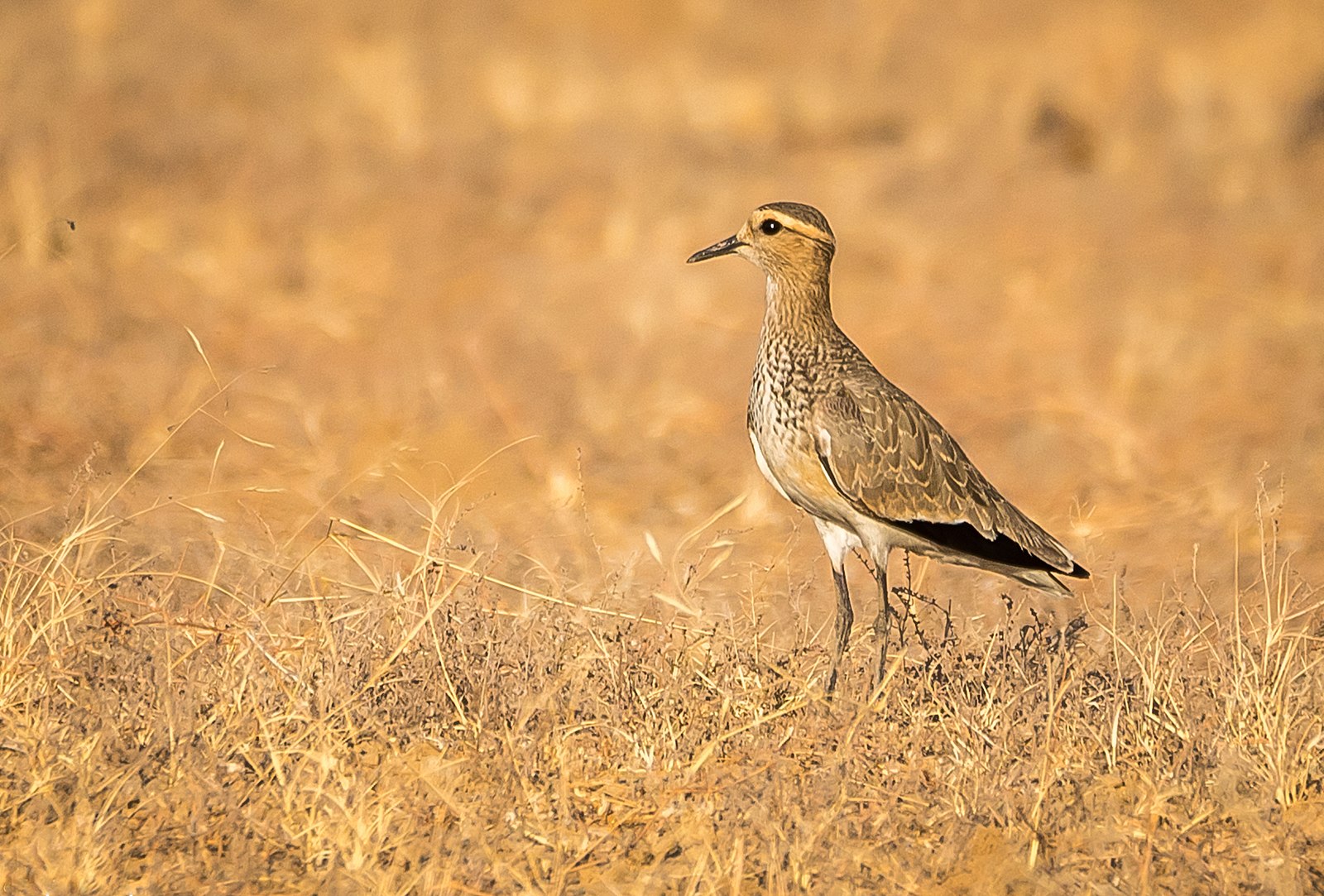
The flagship species of the Kazakh Steppe ecoregion is the sociable lapwing. Image credit: Sanjeev Kumar Goyal, Creative Commons
This large ecoregion is bounded in the west by the Ural River, in the north and east by more humid forest steppe, and in the south by the Kazakh Semi-Desert ecoregion. There are many lakes, often brackish and saline, and the Ishim and Irtysh Rivers flow through the ecoregion. Winters are long and cold. Average monthly temperatures are -19–25°C and the mean annual precipitation is 150–300 mm.
Plants here are adapted to droughts, strong winds, fires, and grazing. European white birch and aspen are confined to watercourses and patches of accessible groundwater; scots pine trees grow on higher ground. There are numerous steppe plant communities, varying with soil type and water availability. Species-rich meadow-steppes include plants such as earth-nut pea, cutleaf anemone, Roman wormwood, and early sedge.
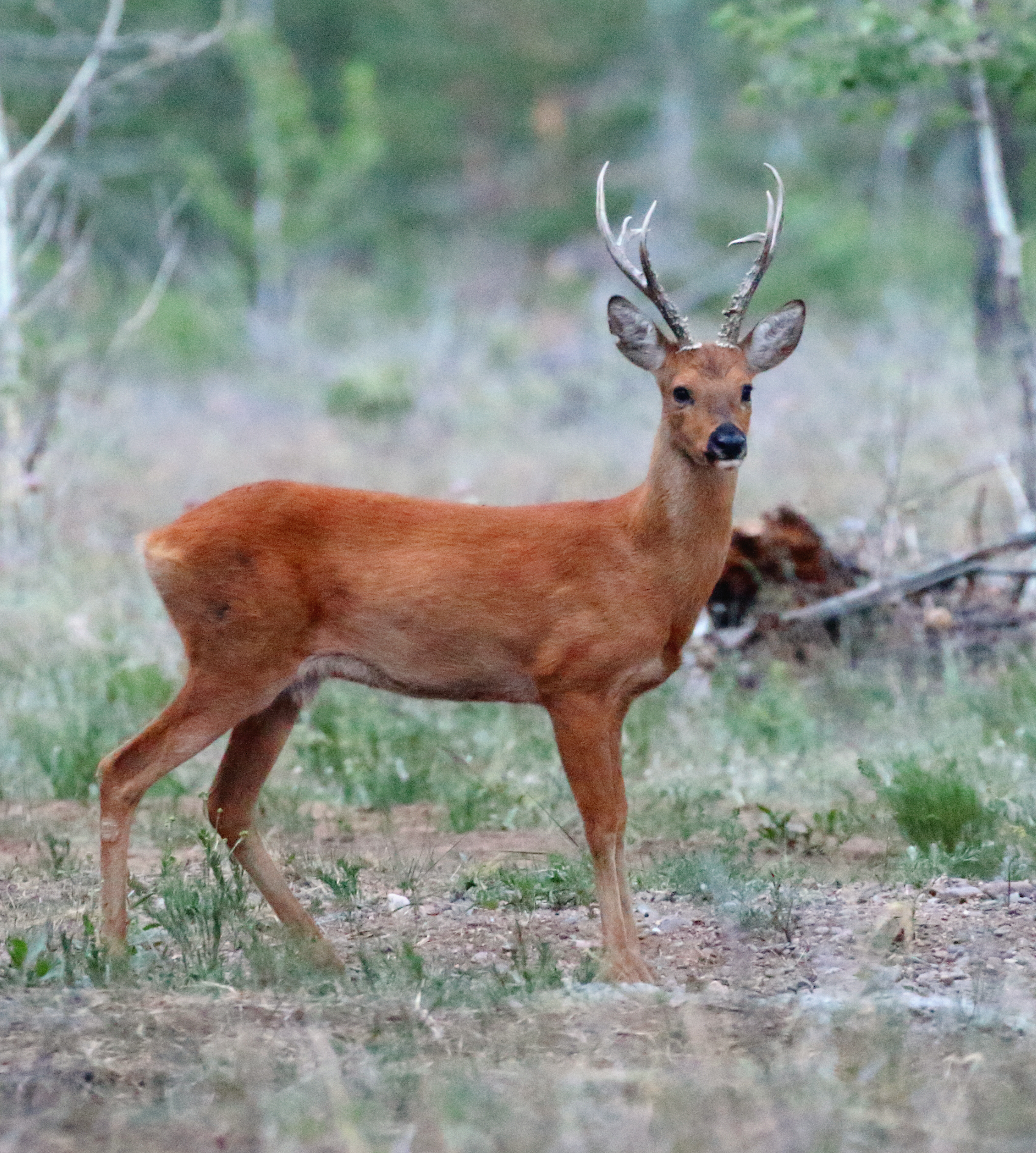
Siberian roe. Image credit: Andrey Giljov, Creative Commons
Dry steppes of Lessing feather grass and steppe fescue form an undulating sea in the constant wind as far as the horizon. Dry short grass steppe is characterized by Festuca sulcate, asters Galatella tatarica and G. villosa, small shrubs of Spirea hypericifolia and ephemeral species such as the rare Tulipa geseriana. Salt-tolerant communities are widespread, with species such as Halocnemium strobilaceum, Artemisia paucifora, Atriplex cana, and Salicornia europaea.
This is the northernmost home of wild Argali sheep. Grey wolf, Eurasian lynx, wild boar, and Siberian roe deer live alongside a host of smaller mammals adapted to the steppe environment, for example, corsac fox, steppe pika, and bobat marmot. Endemic Kazakhstan blind mole rats spends their entire life underground. Critically endangered saiga make their nomadic way across land in the south of the ecoregion.
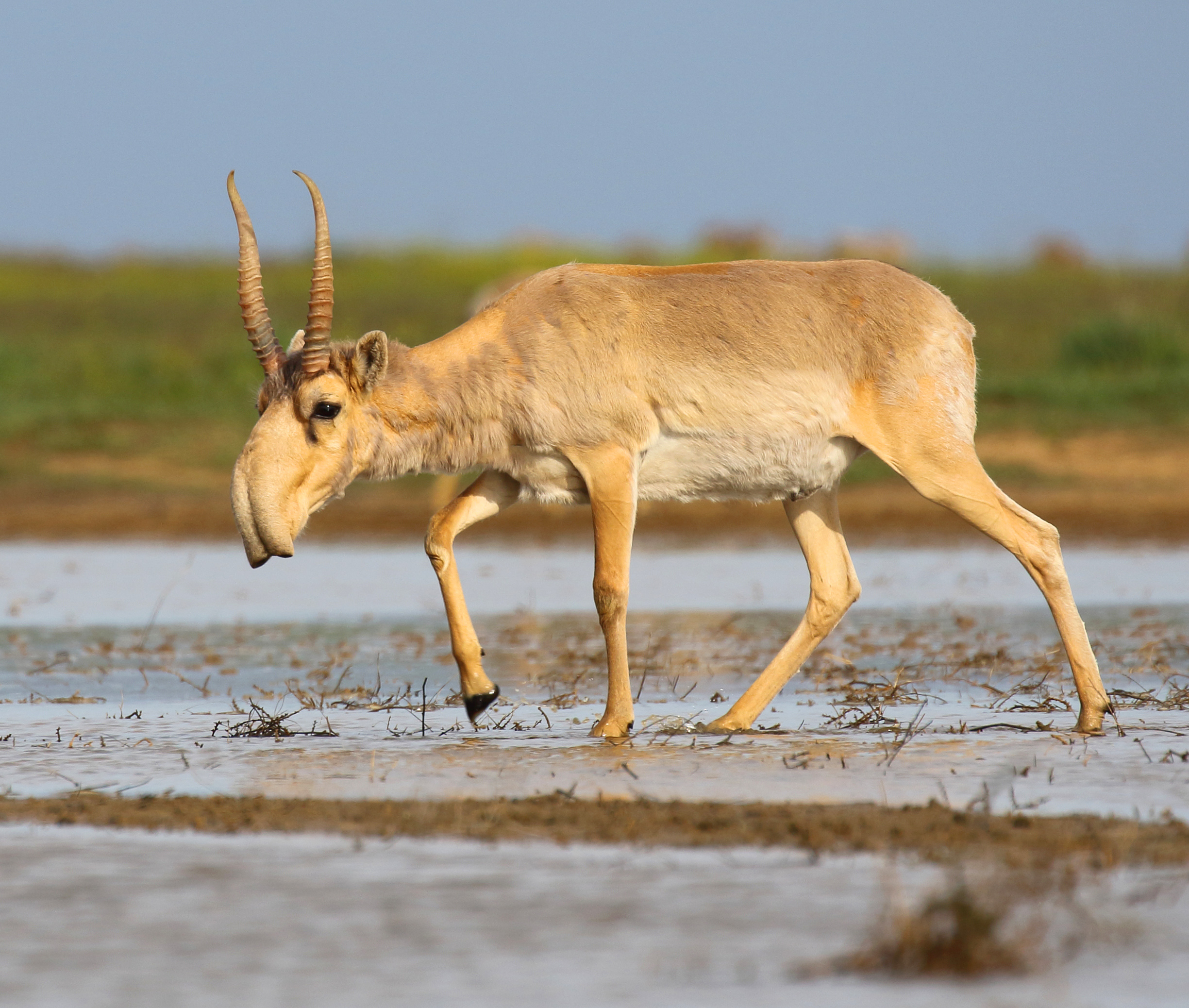
Saiga antelope. Image credit: Andrey Giljov, Creative Commons
The crossroads of the central Asian and Siberian-South-European flyways, the lakes of the ecoregion host millions of migrating birds as they rest, feed and molt. Over 300 species have been recorded, including migrating critically endangered Siberian crane, virtually the entire breeding population of critically endangered sociable lapwing, endangered white-headed duck, and steppe eagle. Lake Tengiz hosts the northernmost breeding population of greater flamingo, numbering up to 50,000 birds.
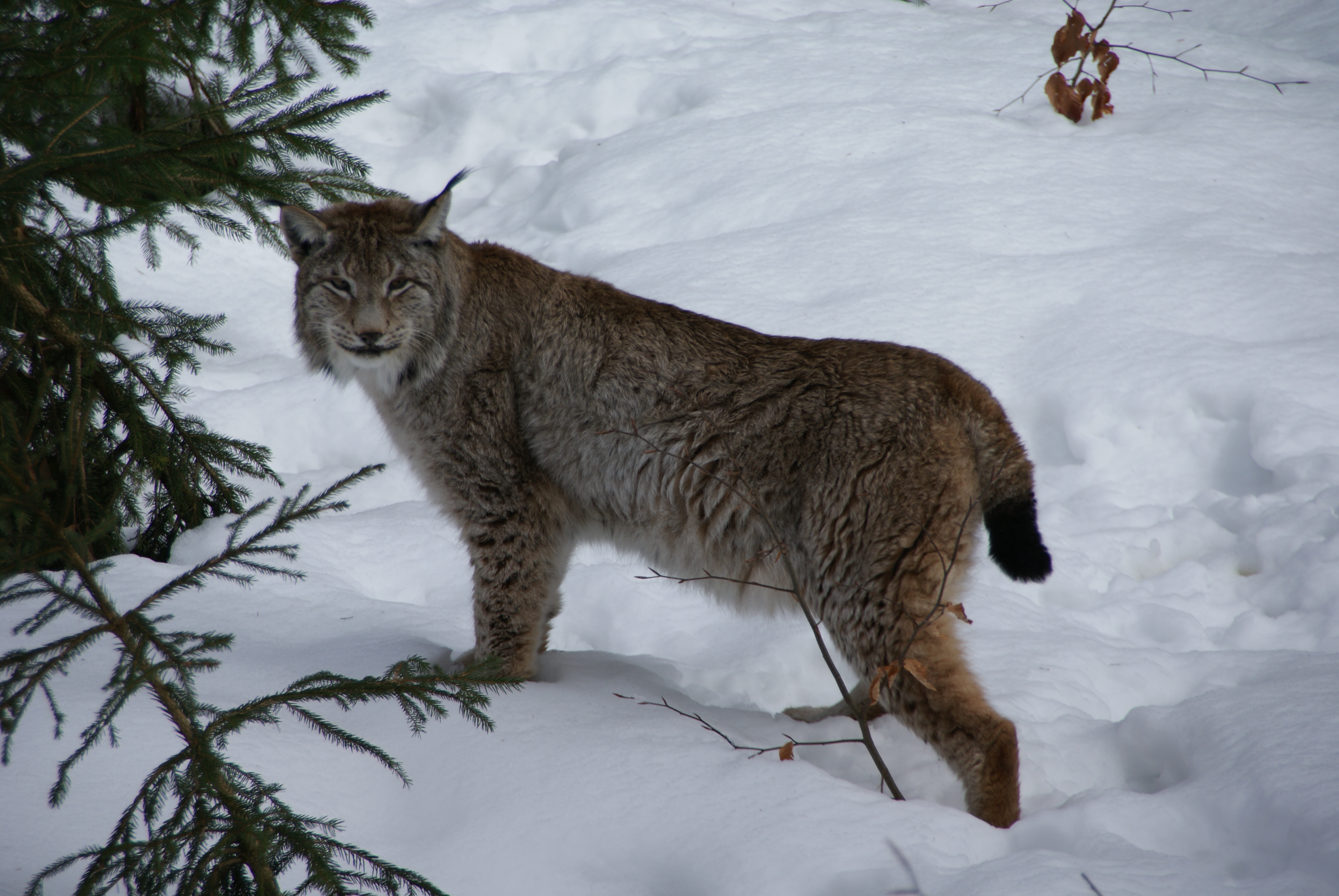
Eurasian lynx. Image credit: Creative Commons
In the 1950s, the Soviet ‘Virgin Lands’ campaign resulted in conversion of vast areas of steppe grassland to cropland. Nowadays, about 60% of the steppe zone is plowed. Islands of natural vegetation are surrounded by vast areas of ploughed land, portions of which were abandoned following the collapse of the Soviet Union. The end of Soviet collective agriculture in 1990 also resulted in a 75% drop in livestock numbers.
The rise of individual pastoral farming businesses now brings livestock inventories to around half the Soviet-era levels but nomadic forms of pastoralism are rare and areas are severely overgrazed. Protected areas include the Saryarka-Steppe and Lakes of Northern Kazakhstan World Heritage Site, covering three lake and steppe areas, but the amount of protection for remaining steppes, and connectivity between them, is very low.
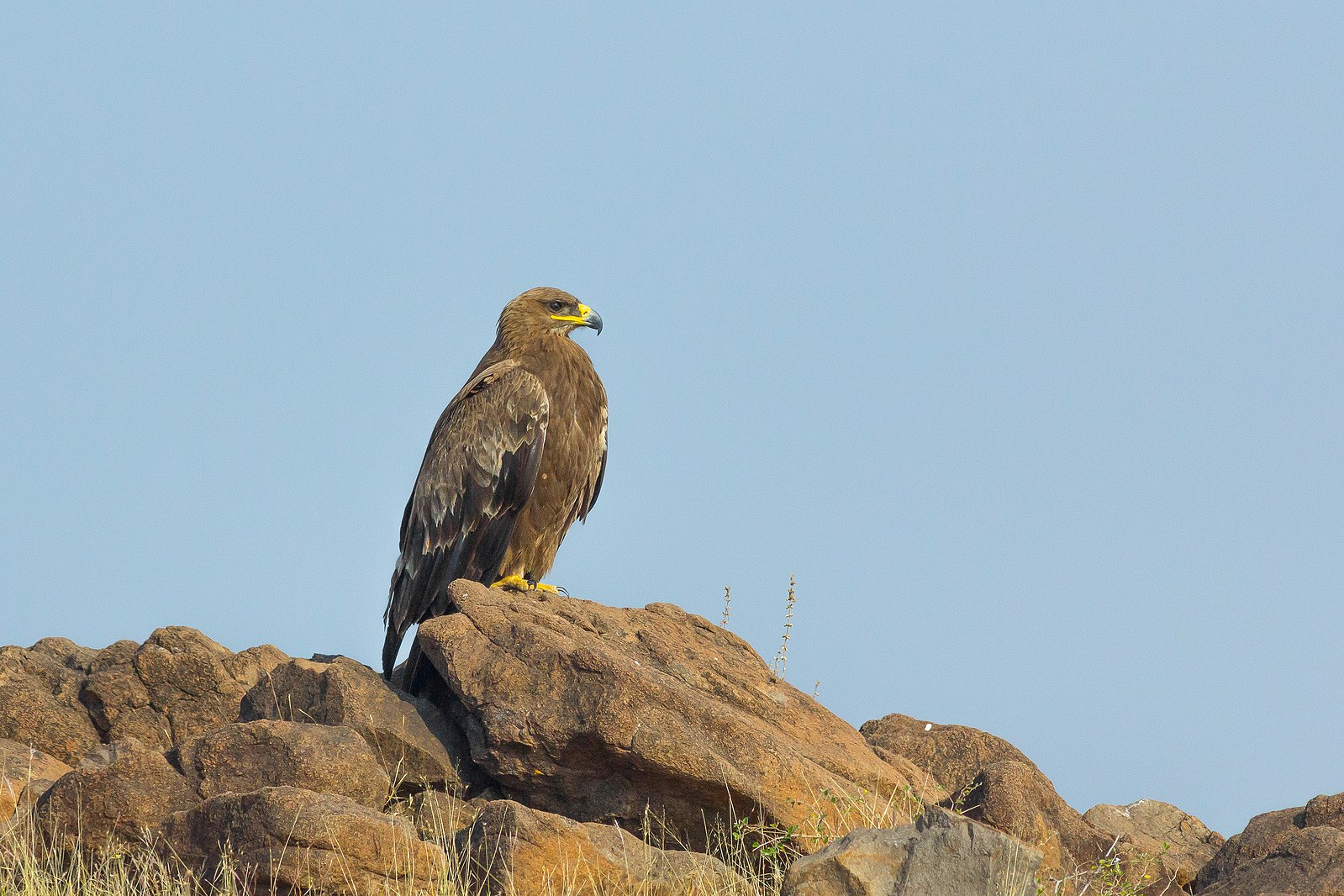
Steppe eagle. Image credit: Creative Commons
The ecoregion is vulnerable to climate change. Drought, an increase in fires, intensified livestock grazing, commercial and industrial development, and tourism and recreation are affecting important bird areas. Fragmentation of natural habitats is limiting the movement of the saiga population. Uncontrolled poaching of birds of prey, reptiles, and saiga has become a serious problem.
The priority conservation actions for the next decade will be to: 1) create a network of protected steppe grasslands with connectivity between them; 2) prevent poaching and trapping of saiga, birds of prey, and reptiles; and 3) encourage low-intensity grazing systems.
Citations
- Joint Research Centre of the European Commission. 2019. The Digital Observatory for Protected Areas (DOPA) Explorer 4: Kazakh Steppe. [Online]. [Accessed 5th December 2019]. Available from: https://dopa-explorer.jrc.ec.europa.eu/ecoregion/80810
- Bragina, T. Nowak, A., Vanselow, K. and Wagner, V. 2018. Grasslands of Kazakhstan and Middle Asia: The Ecology, Conservation and Use of a Vast and Globally Important Area. In: Squires, V.R., Dengler, J., Hua, L. and Feng, H. eds. Grasslands of the world: diversity, management and conservation. Boca Raton: CRC Press.
- Mathar, W., Kämpf, I., Kleinebecker, T., Kuzmin, I., Tolstikov, A., Tupicyn, S. and Hölzel, N. 2016. Floristic diversity of meadow steppes in the Western Siberian Plain: effects of abiotic site conditions, management and landscape structure. Biodiversity and Conservation. 25, pp.2361–2379. doi:10.1007/s10531-015-1023-4.
-Eco732-CC-2007.jpg?auto=compress%2Cformat&w=1600)
.png?auto=compress%2Cformat&w=300)

